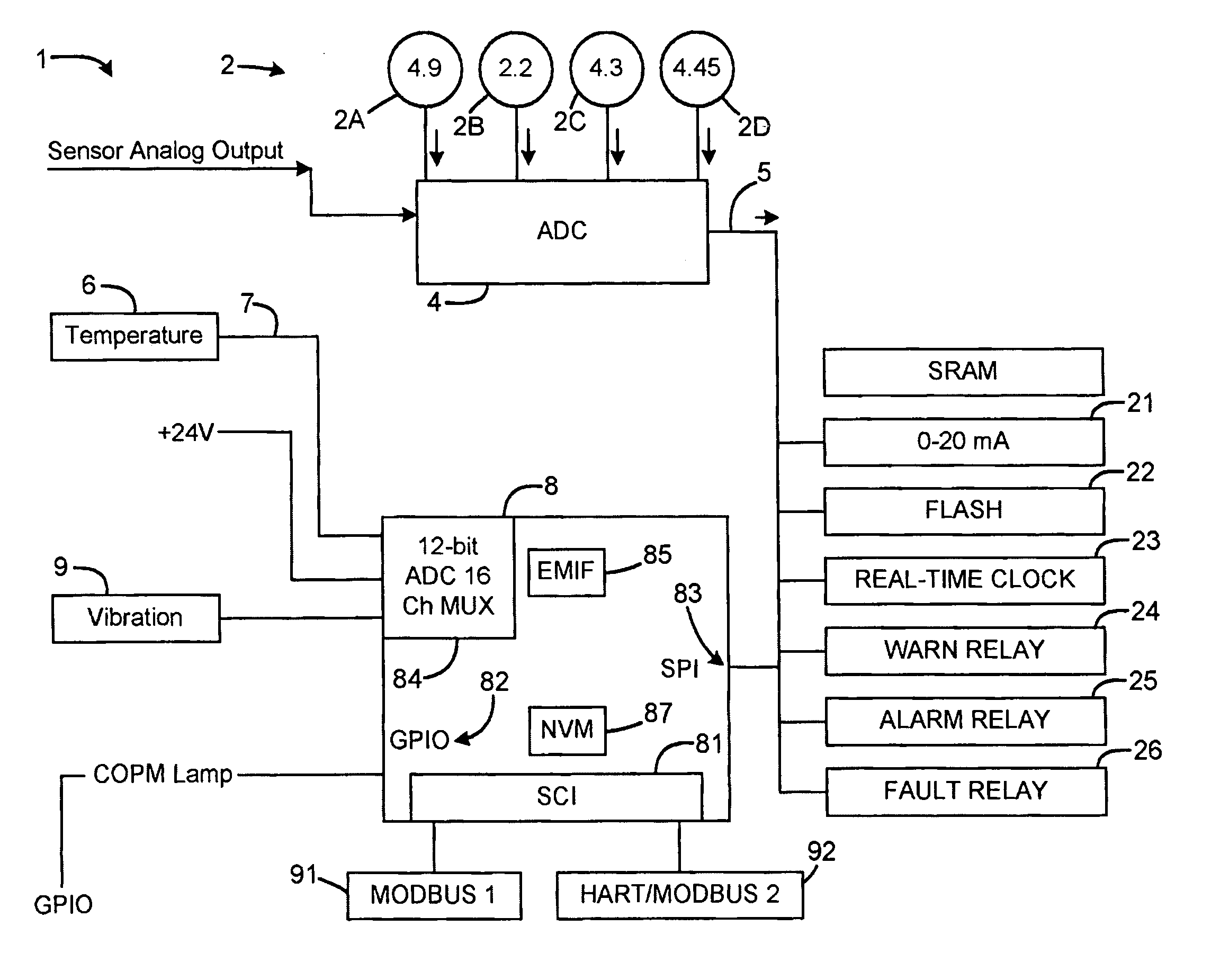Flame detection system
a detection system and flame technology, applied in fire alarms, optical radiation measurement, instruments, etc., can solve problems such as false alarms of flame detectors
- Summary
- Abstract
- Description
- Claims
- Application Information
AI Technical Summary
Benefits of technology
Problems solved by technology
Method used
Image
Examples
Embodiment Construction
[0017]In the following detailed description and in the several figures of the drawing, like elements are identified with like reference numerals.
[0018]FIG. 1 illustrates a schematic block diagram of an exemplary flame detector system 1 comprising a plurality of detectors 2 responsive to optical radiation to generate a plurality of respective analog detector signals 3. An analog-digital converter (ADC) 4 converts the analog detector signals 3 into digital detector signals 5. In an exemplary embodiment, the ADC 4 provides 24-bit resolution.
[0019]In an exemplary embodiment, the flame detector system 1 includes an electronic controller 8, e.g., a digital signal processor (DSP) 8, an ASIC or a microcomputer or microprocessor based system. In an exemplary embodiment, the signal processor 8 may comprise a Texas Instruments F2812 DSP, although other devices or logic circuits may alternatively be employed for other applications and embodiments. In an exemplary embodiment, the signal processo...
PUM
 Login to View More
Login to View More Abstract
Description
Claims
Application Information
 Login to View More
Login to View More - R&D
- Intellectual Property
- Life Sciences
- Materials
- Tech Scout
- Unparalleled Data Quality
- Higher Quality Content
- 60% Fewer Hallucinations
Browse by: Latest US Patents, China's latest patents, Technical Efficacy Thesaurus, Application Domain, Technology Topic, Popular Technical Reports.
© 2025 PatSnap. All rights reserved.Legal|Privacy policy|Modern Slavery Act Transparency Statement|Sitemap|About US| Contact US: help@patsnap.com



